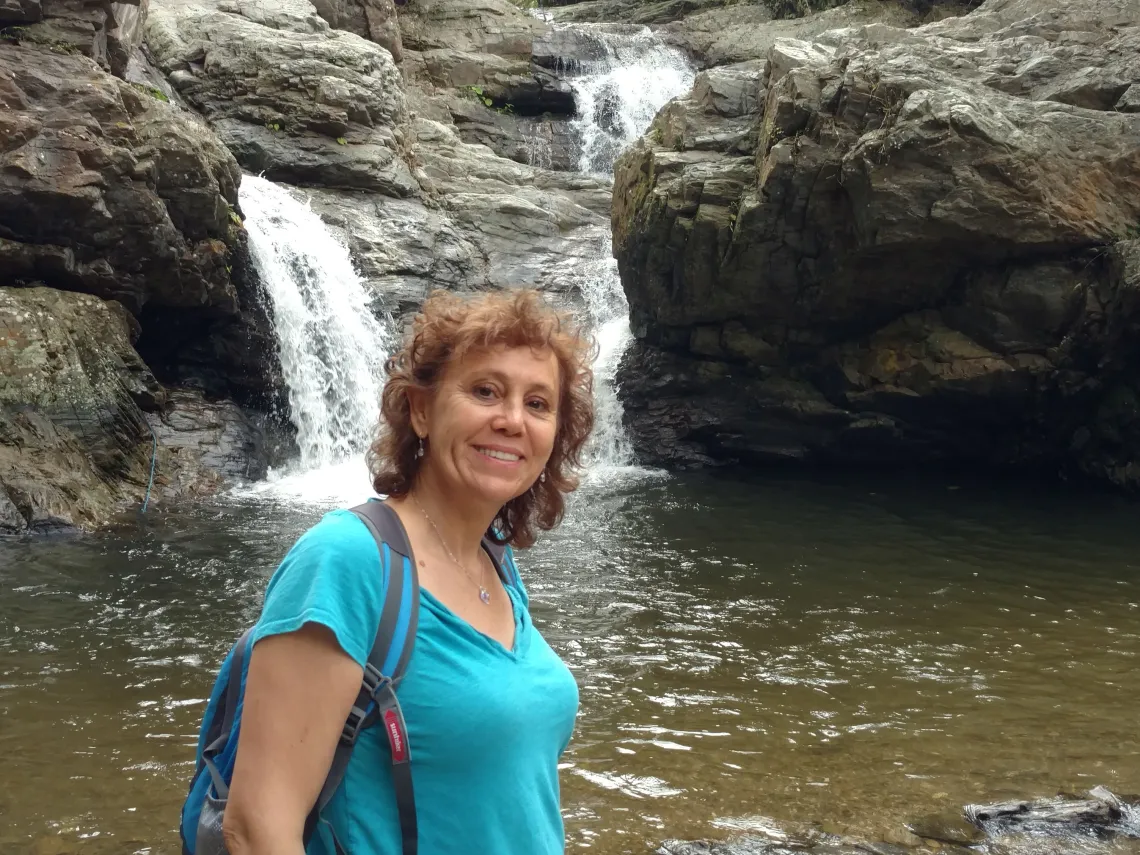Master of Legal Studies Grad Looks to Improve Environmental Policy by Bridging Science and the Law

Science and the law are distinct fields, but each can be strengthened when they intersect. That’s where Class of 2021 Master of Legal Studies graduate Cora Varas-Nelson sees herself having the biggest impact.
“I feel it is very important to bridge that gap between science and law,” says Varas-Nelson.
Varas-Nelson has a PhD from the University of Arizona’s School of Natural Resources and the Environment and is interested in evolution and the environment. Her research has varied from evolution in sexual behavior and conservation genetics to understanding the evolution of population using molecular techniques. She has studied how black bears evolve in certain environments and how barriers that bears face affect their population viability and long-term survival of the species.
Eventually she reached a point in her career where she wanted to expand beyond research.
“After a while, I wanted to communicate science better and use scientific information to do something else,” says Varas-Nelson. “[I wanted] to communicate to the public, to law makers and try do something else with that information.”
She was inspired to look into law after a University of Arizona Law student in one of her labs was discussing how law can be used to make a difference on the various topics they were discussing.
“I think students are the best ambassadors of the program,” she says. “When you communicate what you are doing and you show excitement about it, that is how I became interested [in law].”
She decided that a Master of Legal Studies degree from University of Arizona Law would best train her to better communicate science to the public and to lawmakers.
“To have a better protection of our wildlife and environment, we need an interdisciplinary and multi-methodological process,” Varas-Nelson says. “We need to pull together different fields and come out with different ideas on how to solve problems, and law is giving me that.”
A key opportunity during her legal education was participating in the Natural Resource Use and Management Clinic, where she was able to combine science and the law.
“To be part of the Natural Resource Use and Management Clinic provided me with hands-on research experience in real-world legal questions, interactions with clients, legal discussions and practice in legal writing,” she says. “The clinic allowed me to investigate critical environmental issues that I cared about and that affect Arizona and the western part of the United States, including water, endangered species, public lands, climate change, tribal lands and other resources.”
Varas-Nelson says her year in the clinic allowed her to share ideas, present research, and combine science and law and collaborate with a variety of students and professors.
“I was the only MLS student and everyone else was a JD student,” she says. “I got to see the difference of opinions and thoughts and interact with faculty with different backgrounds. It was very interesting, and I learned a lot.”
She says another standout was learning about the Colorado River with Professor Robert Glennon. The course covered the history and laws around the river and involved visiting farmers, talking to scientists and learning about the food supply chain and food safety.
As for what’s next, Varas-Nelson will take a break from her university teaching position to focus on research and integrating the law, especially around genetics and the environment. She says there are many fascinating issues that still need to close the gap between science and the related laws, and she looks forward to working on policy from a scientific perspective.
Says Varas-Nelson, “I have opened my mind with new knowledge, and I want to see what is next and make a difference.”
